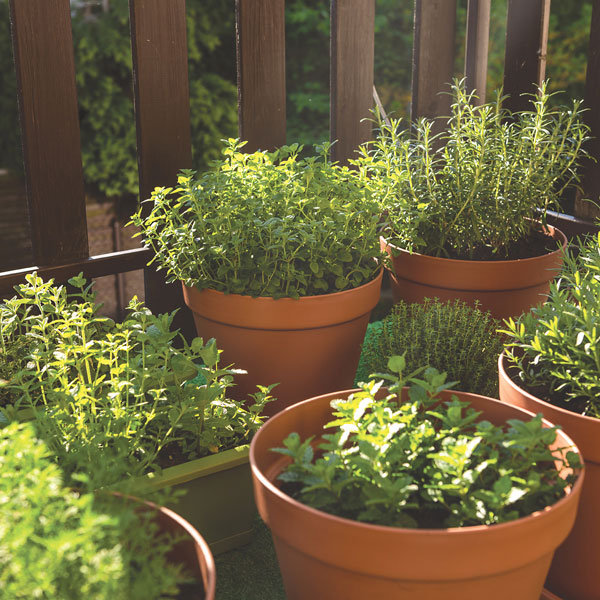Abandoned last fall when its blueberry bush was transplanted into a more spacious container, the pot needed new tenants. Life intervened, I gave it scant thought, and the pot sat empty and forgotten.
After much procrastination, the pot was reborn in spring with one of my favorite plant families: herbs. Tarragon, sage and thyme now thrive in that old pot.
Every gardener should welcome herbs. Lavender and rosemary are not uncommon in Sacramento gardens. I grow four different lavenders and both upright and trailing varieties of rosemary.

I snip chives for my eggs, baked potatoes and salads. My basil mutates to pesto or shows off in caprese salads. Home-grown oregano, garlic, cilantro and Italian parsley are staples at the Vierria Rancheria.
The word herb has a generous meaning. Most herbs are herbaceous (soft, flexible, green stems), but some are woody. Others are grasses, trees and even underground dwellers.
Fragrant and forgiving, herbs are easier to grow than flowers and vegetables. They can thrive in pots, in the ground, indoors or hydroponically. They require little fertilizer, space and are water-efficient. Once harvested, herbs can be dried, some frozen or used fresh in season.
Primarily utilized to season food, herbs have medicinal uses that date back 5,000 years according to accounts by the Sumerians. Archaeological evidence points to medicinal use of herbs to more than 50,000 years ago. Today, herbs are used in teas, salves and essential oils.
Growing your own herbs can save considerable money. Buying herbs at the grocery store is not cheap. After potting up my tarragon, sage and thyme, I checked prices of supermarket herbs. The trio would have cost more than $20 for the least expensive dried brand and much more for organic and high-end brands. A small bouquet of fresh herbs is pricey too and its shelf life is a few days.
All herbs require well-drained soil and a minimum of six hours of daily sunlight. Pruning herbs is another word for harvesting. Once pruned, herbs regenerate more leafy goodness.
To enhance your enjoyment of home-grown herbs and avoid common mistakes, these suggestions may be helpful:
Fans of Southeast Asian cuisines, including Thai, Vietnamese, Cambodian and others, should consider growing lemongrass. Its citrusy flavor is unique and delicious!
I have grown lemongrass just for the Thai coconut-chicken soup tom kha gai. Lemongrass spreads as much as 2 feet in a single season, so it requires maintenance if not planted in a pot. You will only use the bottom 4–5 inches of the stalk for seasoning dishes.
Mint is popular in the home garden and different varieties have unique scents: spearmint, peppermint, chocolate, apple, orange and pineapple, among others.
Mint is an escape artist and has an invasive growth habit. If you plant mint in the ground, expect it to take over the entire garden if not carefully monitored. Mint is best planted in a container placed on concrete, stone or pavers.
Basil, with its hints of sweetness and anise, is a summer favorite. Harvest leaves before it flowers for the best flavor. Pinch developing flowers back to the next set of leaves to promote a bushier plant with more leaves. Basil is an annual so expect it to die when winter arrives.
Italian flat-leaf parsley is essential for home cooks. Easy to grow, the versatile herb is best used fresh. Parsley is a biennial, which means it’s a robust plant the first year, but will flower and die the second year. Treat it as an annual.
Cilantro is a cruel herb. Just when it’s needed for summer salsas and fish tacos, our Sacramento heat forces it to flower and die. Like dill, cilantro grows best in spring and fall. To ensure summer cilantro, seed it in cycles. Once cilantro is big enough to harvest leaves, seed another, followed by a third seeding.
For more helpful information, visit sacmg.ucanr.edu and click “Herbs.” Soon, you will be snipping your own fresh and fragrant herbs!
Dan Vierria is a University of California Cooperative Extension Master Gardener for Sacramento County. He can be reached at masterg29@gmail.com. For answers to gardening questions, contact the UCCE Master Gardeners at (916) 876-5338, email mgsacramento@ucanr.edu or visit sacmg.ucanr.edu. Follow us on Facebook, Twitter and Instagram: @insidesacramento.















